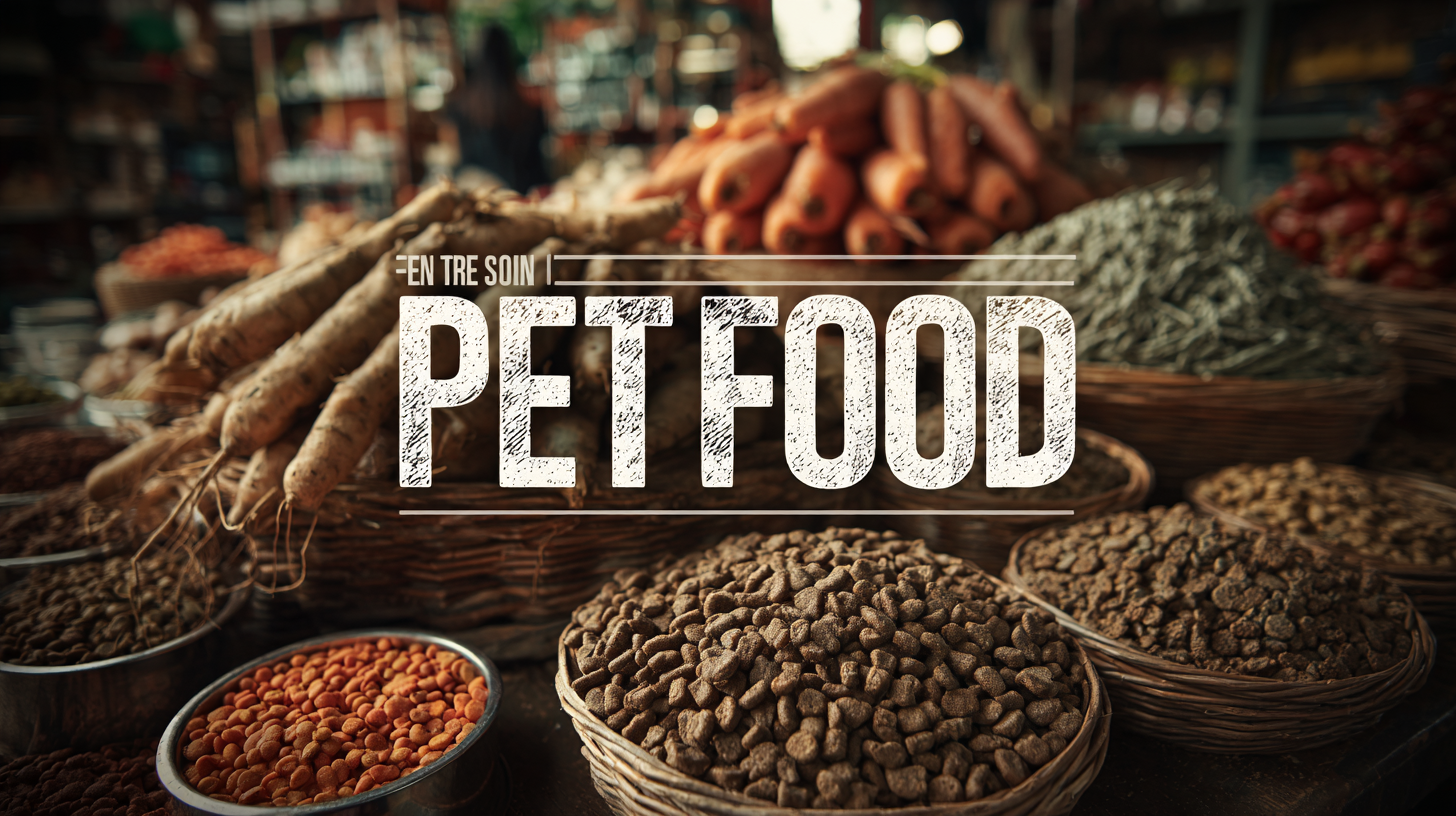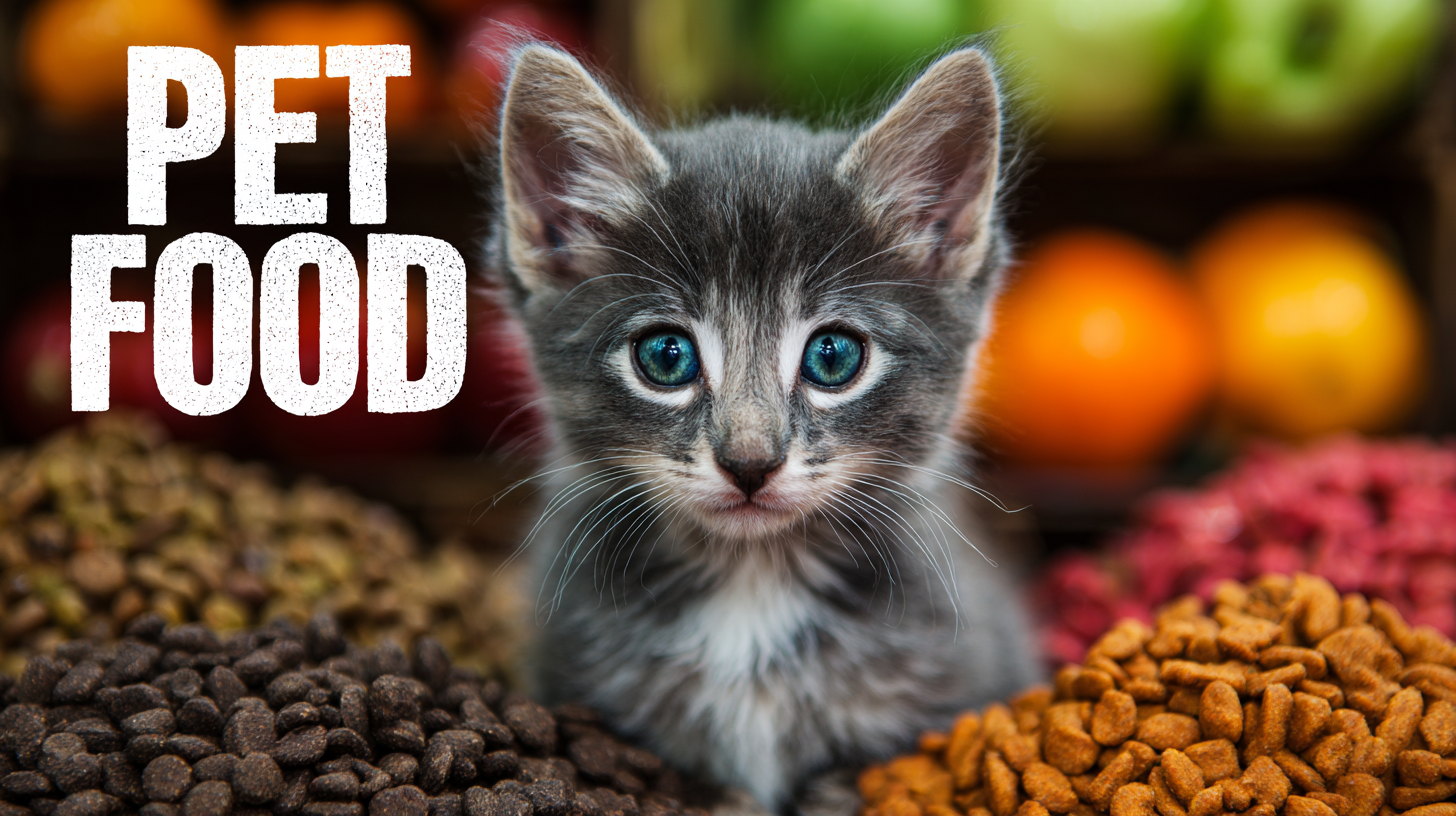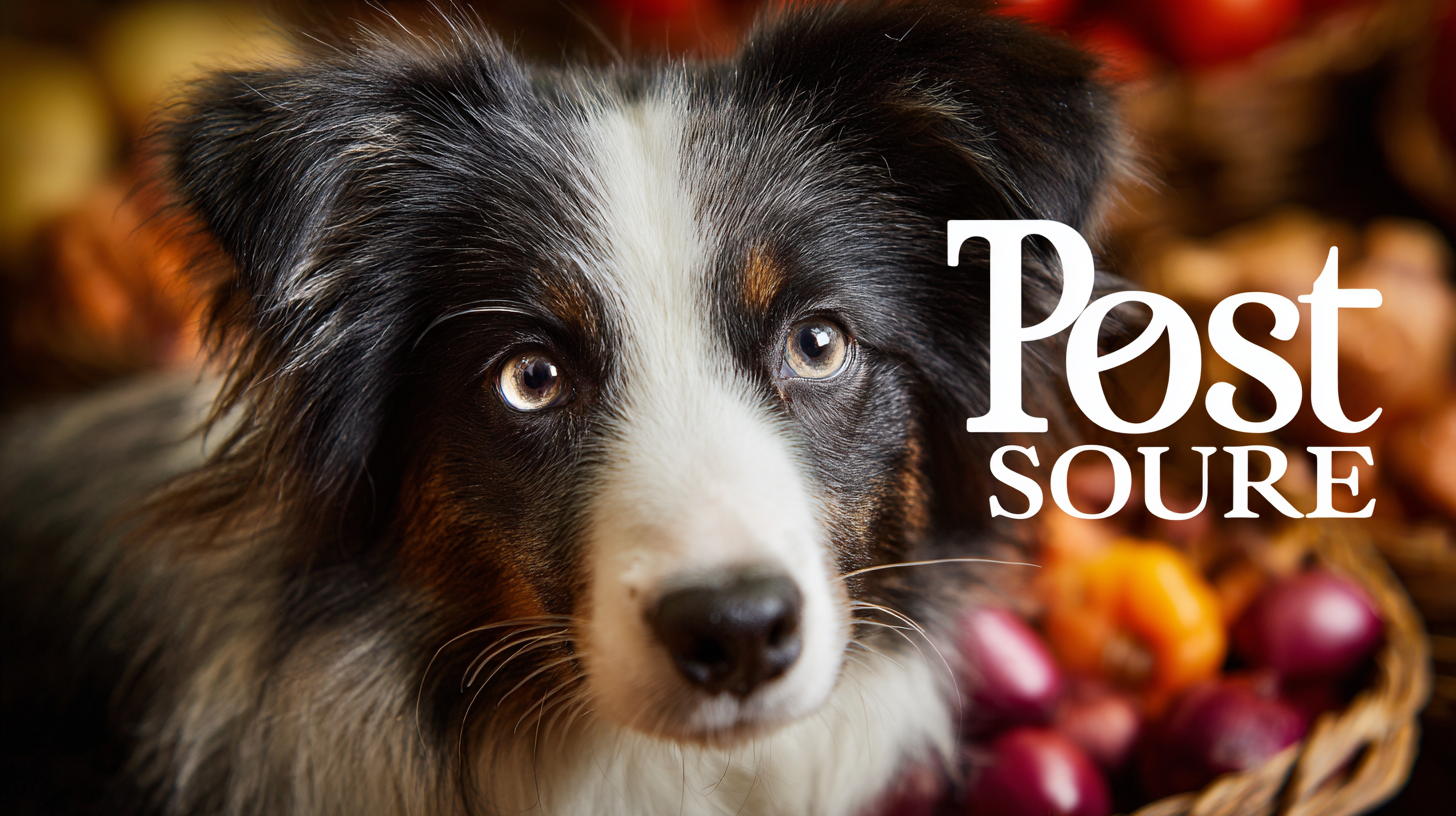In recent years, the global pet food industry has transformed into a colossal market, projected to reach an astounding $30 billion by 2026, as reported by several industry analysts. This rapid growth can be attributed to increased pet ownership and a rising emphasis on high-quality nutrition for pets. As pet parents are becoming more discerning about the products they choose, sourcing the best pet food is now more critical than ever. However, with a multitude of manufacturers and options available, navigating this landscape poses a challenge for businesses aiming to thrive in this lucrative market. By understanding key factors in selecting quality manufacturers and implementing effective solutions tailored to various types of pet food, stakeholders can unlock opportunities that not only satisfy pet owners but also contribute to sustainable growth in this dynamic industry.

The global demand for high-quality pet food is rapidly increasing, presenting a lucrative opportunity in a market projected to exceed $138.9 billion by 2024. This growth is largely driven by a shift in consumer preference towards premium products that prioritize health and nutrition for pets. As pet owners become more discerning, they seek out foods that offer both quality ingredients and transparency in sourcing. This trend is not just limited to traditional pet food; the rise in e-commerce is transforming how pet food is sold, making premium options more accessible than ever.
Adding to this vibrant market is the anticipated growth in the pet grooming and accessories sector, which is expected to surge from $77.12 billion in 2024 to a staggering $135.2 billion by 2032. With a compound annual growth rate of 7.37%, this segment is fueled by the increasing expenditures on pet care and grooming products. Pet owners are more inclined than ever to invest in luxury items that enhance their pets' well-being, indicating a promising landscape for those keen on entering the pet food and accessories industry. As the market evolves, recognizing these emerging trends will be essential for businesses looking to capitalize on this ever-expanding sector.
Understanding consumer preferences is pivotal in tapping into the burgeoning $30 billion global pet food market. Pet owners are becoming increasingly knowledgeable about nutritional needs, leading to a significant shift in their buying behavior.
According to a report by the American Pet Products Association, approximately 68% of U.S. households own a pet, and pet food expenditures are expected to reach $42 billion by 2024. This highlights the growing importance of quality and nutrition in pet food choices.
Pet owners are particularly concerned about ingredients and their sourcing. A 2021 survey by Nielsen revealed that 56% of consumers actively seek out products with natural or organic ingredients. Additionally, transparency in labeling has emerged as a non-negotiable requirement; 73% of pet owners want to know where their pet food ingredients are sourced. As health and wellness trends permeate the pet food industry, companies must capitalize on this demand by providing clear, honest, and informative labeling that resonates with consumers' desire for high-quality nutrition for their pets. Achieving this alignment with consumer values can unlock significant growth opportunities in this competitive landscape.

Navigating the complex landscape of pet food regulations is crucial for businesses aiming to tap into the $30 billion global market. In recent years, the pet food industry has experienced significant growth, with the market projected to expand at a compound annual growth rate (CAGR) of 4.5% from 2021 to 2028. However, companies must be aware of the varying regulatory standards across different countries. For instance, the European Union and the United States have established stringent guidelines on ingredient safety, labeling, and nutritional claims. Non-compliance can lead to hefty fines or product recalls, jeopardizing a company's market position.
Understanding international regulations is not just a legal necessity but also a strategic advantage. According to a report by the American Pet Products Association, 68% of U.S. households own a pet, leading to increased demand for high-quality, compliant pet food. Businesses looking to penetrate foreign markets must invest in compliance strategies that align with local regulations. Companies can benefit from regulatory consulting to streamline their operations and avoid costly mistakes. As pet owners become more discerning about product quality, adhering to these regulations can enhance brand credibility and foster consumer trust, ultimately translating to better market performance.
| Tip | Description | Key Considerations | Regulatory Compliance |
|---|---|---|---|
| 1. Understand Nutritional Requirements | Familiarize yourself with the essential nutrients needed for different pets. | Age, breed, and health conditions affect dietary needs. | Ensure formulations meet AAFCO standards. |
| 2. Research Supplier Credentials | Verify qualifications and history of pet food suppliers. | Check for certifications and industry experience. | Suppliers should comply with local and international standards. |
| 3. Emphasize Ingredient Quality | Choose high-quality ingredients for optimal pet health. | Look for whole foods and avoid fillers. | Ingredients must meet safety regulations in respective markets. |
| 4. Monitor Market Trends | Stay updated on pet food trends and consumer preferences. | Natural, organic, and grain-free products are on the rise. | Be aware of label claims and their regulatory implications. |
| 5. Build a Strong Distribution Network | Establish reliable channels for reaching target customers. | Consider e-commerce and local partnerships. | Ensure compliance with import/export regulations. |
Creating a successful marketing strategy for premium pet food products requires an understanding of your target audience and the unique value proposition of your offerings. As pet owners are becoming more conscientious about the ingredients and sourcing of their pets' food, it’s crucial to highlight factors such as nutritional benefits, quality sourcing, and transparency.
 Storytelling can be a powerful tool in this context; share the journey of your products from farm to bowl, emphasizing the care taken in every step. Engaging visuals of wholesome ingredients and happy pets can effectively capture consumer interest on social media platforms and websites.
Storytelling can be a powerful tool in this context; share the journey of your products from farm to bowl, emphasizing the care taken in every step. Engaging visuals of wholesome ingredients and happy pets can effectively capture consumer interest on social media platforms and websites.
Another effective strategy is leveraging influencer partnerships within the pet community. Collaborating with well-known pet owners or veterinarians can enhance credibility and broaden your reach. Their endorsements can introduce your brand to their followers who trust their recommendations. Additionally, consider offering promotions or samples at pet events and online to encourage first-time buyers to experience the quality of your product firsthand. Such interactions can create a loyal customer base that values both the health of their pets and the premium offerings you provide.
In the rapidly evolving pet food industry, leveraging technology for sourcing and distribution can unlock significant opportunities in the $30 billion global market. The integration of advanced data analytics, blockchain, and artificial intelligence has become essential for pet food manufacturers aiming to meet the growing consumer demand for transparency and quality. According to a report by Statista, the pet food market is expected to reach over $45 billion by 2026, highlighting the urgency for brands to adopt innovative strategies to remain competitive.
Utilizing technology not only streamlines the supply chain but also enhances the sourcing process. For instance, blockchain technology can provide traceability for ingredients, assuring pet owners of the quality and safety of the products they choose. Furthermore, data-driven insights allow companies to predict market trends, optimize inventory levels, and tailor offerings to specific consumer preferences. A study from Grand View Research indicates that nearly 60% of pet owners are willing to pay a premium for specialized or organic pet food, emphasizing the potential for companies that harness technology to cater to these discerning customers effectively.